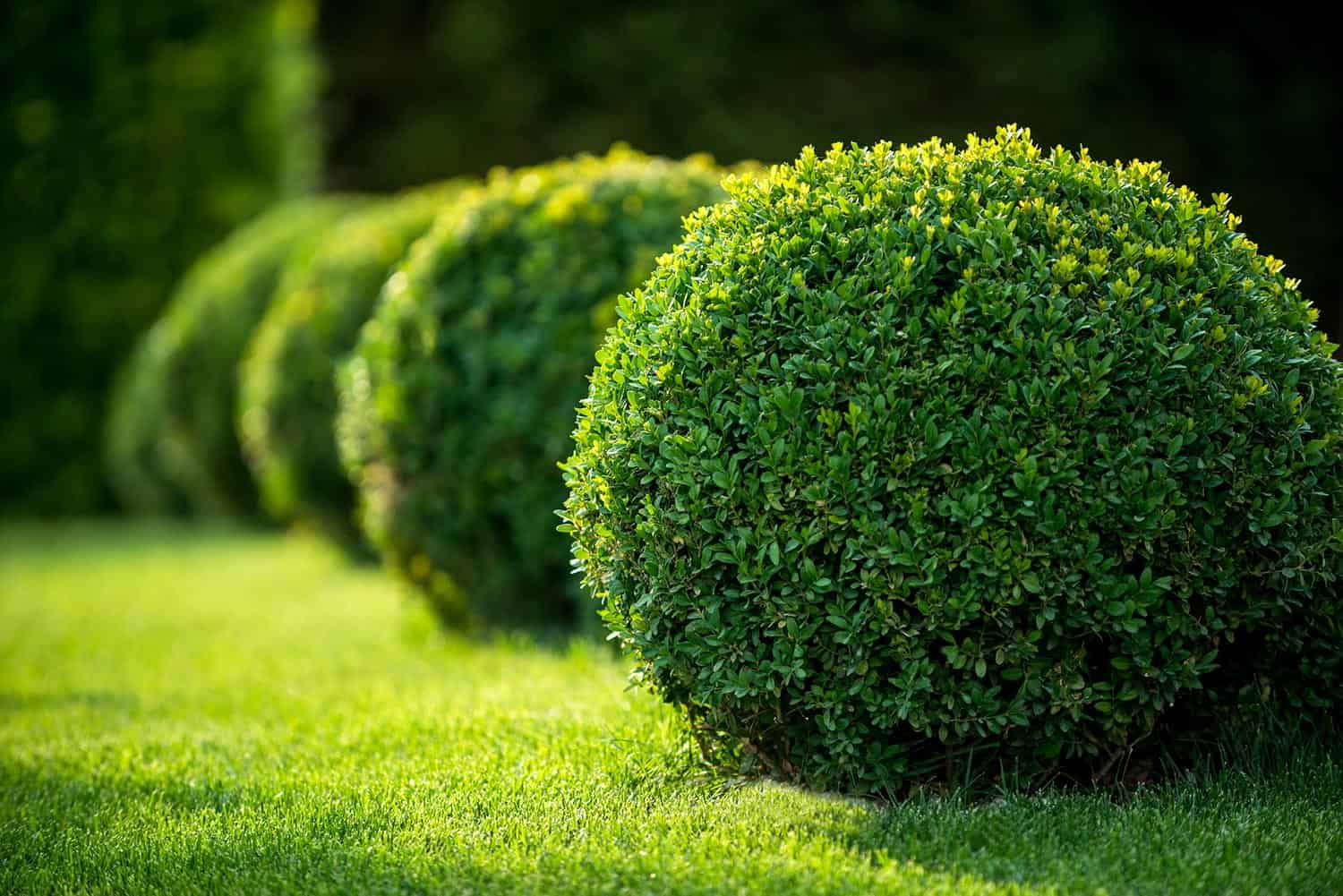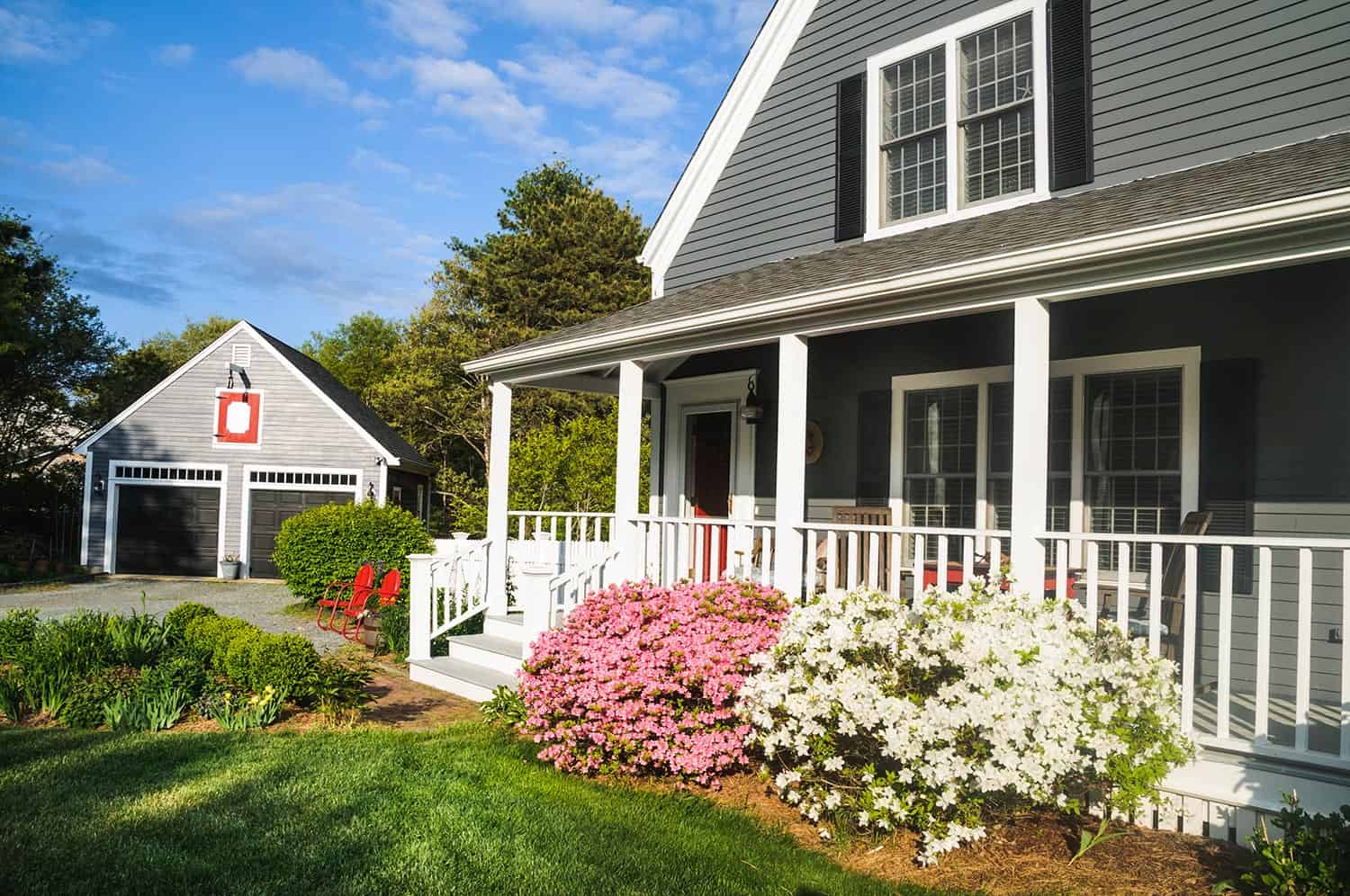A home can be tastefully and beautifully formatted in every other way, but if there is a high, concrete foundation showing, that could easily ruin its exterior appearance. So, you may be looking for some out-of-the-box, beautiful ways to cover up your home's foundation. We've given you some guidance on how you can do just that.
To cover up a house's high foundation, you can:
- Install lattice
- Install stone veneer
- Paint on stucco
- Plant shrubs and flowers
- Paint the concrete
So now you have some ideas on how you can make this happen, but maybe you want some more details and instructions. Keep reading to learn more.

Contents
Lattice
Lattice is a very easy, inexpensive way to cover the foundation of a home, and it adds a touch of classic detail and character. You can install most lattices by building wood frames around the skirt of the home and then attaching the lattice to these frames using wood staples.
Types Of Lattice
Choosing the best type of lattice for your project is important to achieving the look you desire. Lattices are typically produced from pressure-treated wood or vinyl.
While both materials are waterproof and suitable for the outdoors, pressure-treated wood can be characterized as "unfinished" while vinyl is "finished."
Vinyl lattices usually are sold in neutral colors, such as white or gray, but they are not meant to be painted or stained. If you would like to have more creative freedom with your lattice covering, we recommend choosing a pressure-treated wood lattice. If you'd like to install the lattice unceremoniously, however, we recommend choosing vinyl.
Stone Veneer
Perhaps the finest method of covering a concrete foundation is with stone veneer. This skirting gives the home a high-end, polished finish.
Natural stone veneer is a bit more difficult to install, as the product is heavy and tough to apply. Still, you can install manufactured stone veneer quite easily by the homeowner themselves.
After cleaning the area with a pressure washer, you can spread S-Type mortar mix to the concrete wall using a trowel. Apply the mix to 10 square feet at a time, after which placing the stones as close to one another as possible. Work either from the bottom up or from the top down.
When stones need cut, use a circular saw with a masonry blade. Press the stones deeper into the mortar when they have been setting for thirty minutes. After the stones are firmly in place, use a mortar bag to fill in the joints between the stones.
Take a look at this masonry blade on Amazon.
Stucco
Stucco has gained notoriety as a very low-maintenance material for both interiors and exteriors. When added to a foundation, it adds a clean, easy finish.
Stucco is another method that a homeowner can do. Concrete foundations are especially well suited to stucco, as they are sturdy and solid, allowing the stucco to be easily applied.
After you clean the foundation using a pressure washer, you will need to paint on a coat of a concrete bonding product. You must allow it to dry completely.
Once you finish this, add the stucco mix to water. Apply this mix with a plasterer's rake. This coat must dry for 36-48 hours. In the meantime, you can aid the curing process by periodically misting the stucco with water.
Check out this plasterer's rake on Amazon.
Then apply the second coat of stucco with a trowel, going over the coat with a float if you desire a smoother finish. This is the coat that you may choose to add pigment to. Allow the coat to dry for several dies, continuing to mist it with water during this time to ensure that it will be durable and strong.
Take a look at this trowel set on Amazon.
Shrubs And Flowers
A home's foundation can be smartly disguised by a green thumb, with the right amount of shrubbery and flowers placed around the skirting. Not only do they cover the foundation, but they draw the eye away from it, too!
Ideas For Shrubs And Flowers
When choosing shrubs to disguise a foundation, you will want to choose those that are tall, full and hardy, and can live in close proximity to other plants.
It also may be helpful to choose some shrubs for your flowerbed that will not go dormant in the winter. Evergreen bushes are a great choice for this reason. They retain their greenery year-round, also staying full in cooler months.
An example of an evergreen shrub is the Boxwood, which is a popular option for homeowners as it is incredibly dense and resistant.

Hydrangeas, a type of flowering shrub, is another gorgeous choice for foundation coverage. Though this shrub is not an evergreen, it makes up for this with its bright, large blooms that last for months.
A passerby is more likely to notice the striking blooms than the foundation behind them. This type of shrub can also grow quite tall and full of proper care, making it an excellent option for coverage.

Azaleas have thick foliage and bright, lovely blooms. These appear almost tropical, with waxy leaves and large flowers. What is convenient about these plants is that they are quite diverse, with some even being evergreen.

Ideas For a Flowerbed
You can also design a flowerbed to create maximum coverage for your foundation. Choose the taller growing plants for the back and plants that will grow closer to the ground for the front.
Having a healthy mix of deep green and bright blooms is also important. One could also use flower garden decorations to continue to draw the eye away from the foundation, such as creative planters and stakes. An inventive way to cover the foundation may be putting together vertical flower beds to lay behind the other plants.
Painting
Painting the home's foundation is perhaps the most straightforward way to disguise its appearance. It's important to note that this should only be done on a structurally intact foundation.
If you attempt to paint a foundation with significant cracks, this will not end with a polished appearance. You should always have significant cracks in the foundation repaired by a professional.
If your foundation is healthy, you will only need to clean it before beginning to paint. You can do this easily with a pressure washer.
Once it is clean, you will want to begin with a paintbrush to fill in the grooves and nicks. Then use a roller to complete the first coat. You will then complete the project by painting on a second coat after the first has dried completely.
What Color Should A House Foundation Be Painted?
A home's foundation should be painted with a color that closely matches the home's primary exterior color or the home's trim color. If you desire a look that is more seamless, we suggest choosing to paint the foundation the home's primary color.
However, if you desire a more characterized, color-block look, you may desire to paint the foundation the same color as the home's trim.
Keeping Your Foundation Strong
Water damage and flooding are common causes of foundation disintegration. So, of course, drainage is essential to the long-term health of a foundation.
How Do I Make Good Drainage Around My House Foundation?
Creating proper drainage around a foundation is very important. One of the simplest ways to do so is to be sure that your home has downspouts and extensions.
While gutters create a way for water to escape away from the roof in an orderly way, if there are no downspouts, this water will only fall to your foundation. If a downspout still seems to be too close to the foundation, you can purchase extensions to be sure that the water will be far removed from the skirt of the house.
Another way to prevent water from pooling around the home's foundation is with soil grading. This method involves simply adding dirt around the skirt of the home and sloping it downward away from the home. This should be done periodically as the soil will settle over time.
When Should You Waterproof A Foundation?
Ideally, a foundation should be waterproofed immediately after building, but this doesn't always happen. In many cases, especially in older homes, foundations have never been waterproofed.
This should be done as soon as possible, especially if there are already cracks in the foundation, even if the cracks are not structurally damaging. A crack in the foundation signals an opening for moisture and water. If left open, the water and moisture could begin to cause more significant damage.
How Much Does It Cost To Waterproof A Foundation?
Waterproofing a foundation may cost between $2000-$7000, with the average being around $5000. This is definitely a significant expense and one for which you should have a plan.
If your foundation is otherwise healthy, the cost may be less, as you will not have to pay for repairs in preparation for the treatment to the foundation.
In Closing
While the most crucial part of a home's structure, the foundation is not always visually appealing, but we've given you some ways to fix this. Whether through installing lattices or stone, painting the concrete with pigment or stucco, or planting a beautiful garden, we hope you've found a way that suits your tastes to cover up that unsightly skirting.
Want to learn more about your home's foundation? Visit these related posts:
How To Find Out What Foundation Your House Has



